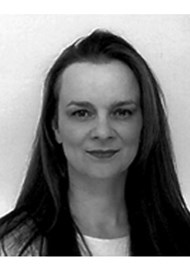The authors’ aim was to evaluate the relationship between nasal septal deviation and facial asymmetry. They performed a study of 60 patients who had facial 3D CT scans from April 2011 to March 2014 and confirmed facial asymmetry, who were requesting rhinoplasty. Patients who had a history of facial bone fracture or congenital craniofacial deformities were excluded. There were 36 males (age 16-77) and 24 females (age 14-71). 3D CT facial analysis was performed of: facial width (distance from maxillozygion to midline), projection (porion to ispilateral maxillozygion), and height (superolateral zygomaticofrontal suture to gonion). Nasal septal deviation was measured on coronal and axial CT scans. Vertical septal deviations were measured as the angle between a line drawn from the maxillary spine to the crista galli and another line drawn from the crista galli to the apex of the septal deviation. Horizontal septal deviation was measured using the angle between the reference line from the most anterior part of the nose to the base of the nasal septum, and from the base of the nasal septum to the most protuberant part of the septum. An angle of more than five degrees was considered positive. The patients with right horizontal nasal septal deviation to the right had a wider right side of the face (P=0.028). Facial asymmetry was observed more frequently in the right side of the face in the current study (P=0.020). There were no other close relationships between nasal septal deviation and facial asymmetry. The authors demonstrate that there is a strong relationship between nasal septal deviation to the right and a wider right hemiface in facial asymmetry patients. Also, facial asymmetry patients tend to have a wider right side of the face compared to the left side. This suggests that horizontal facial growth differences are more correlated with septal deviation than vertical differences. This paper adds to the literature in facial asymmetry and paves the way for future studies.




